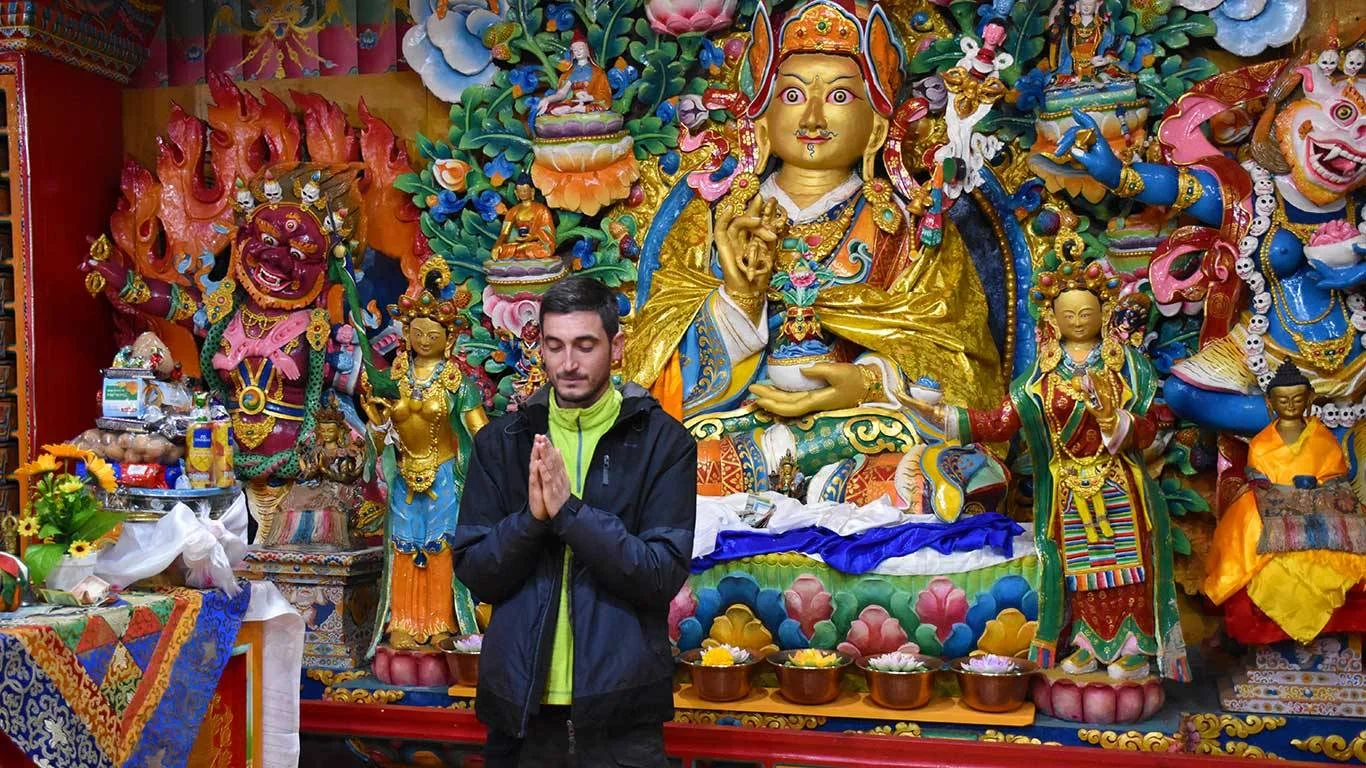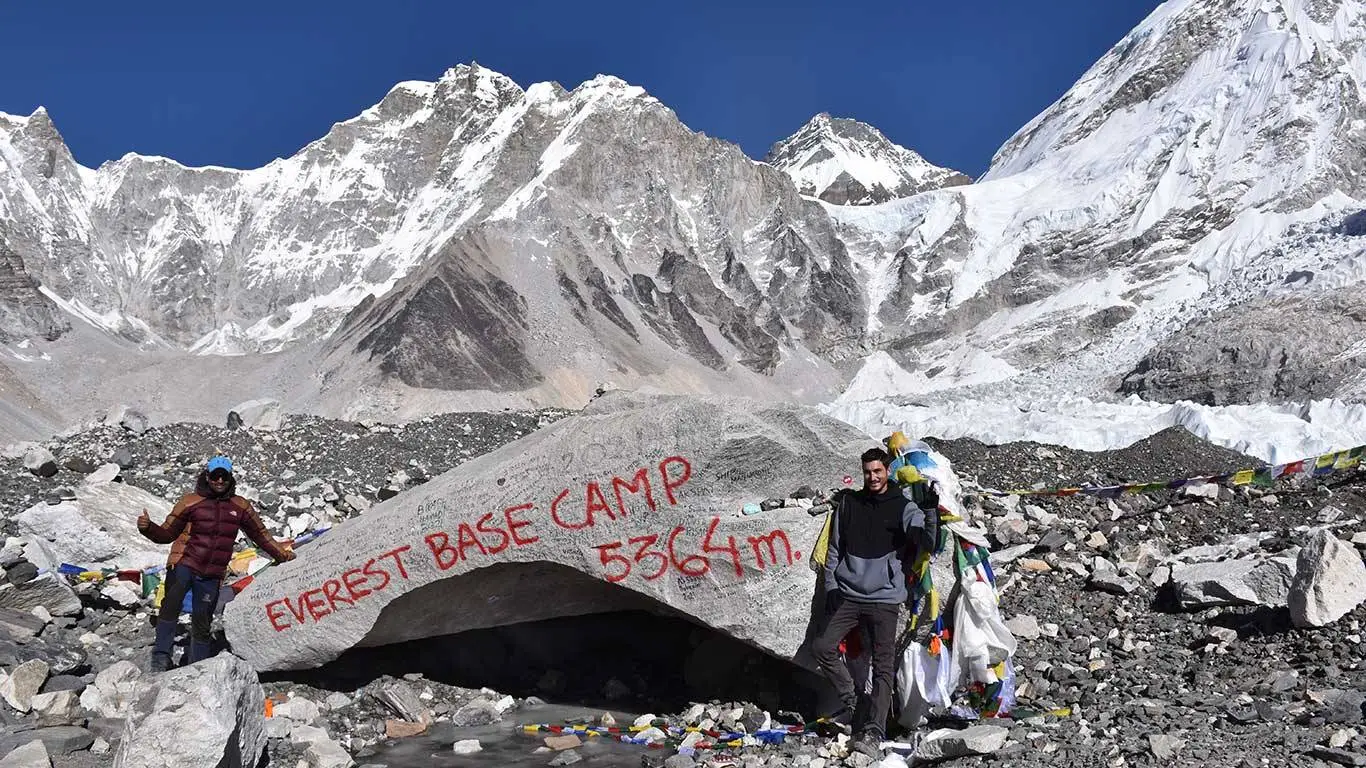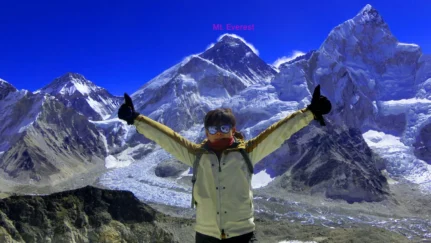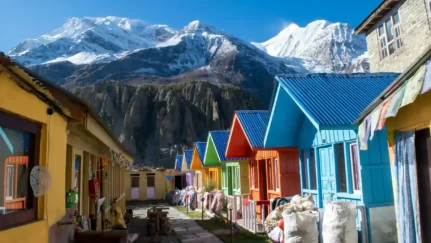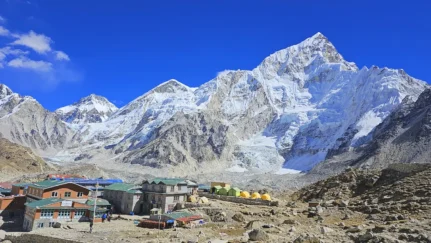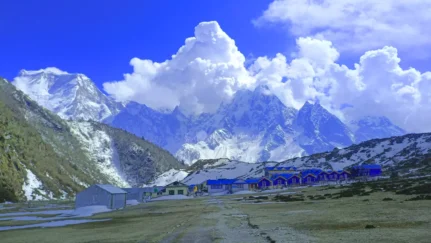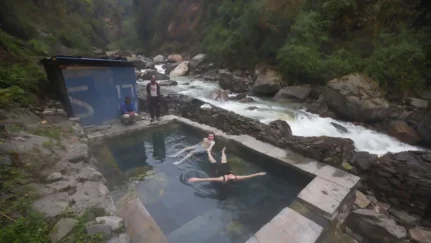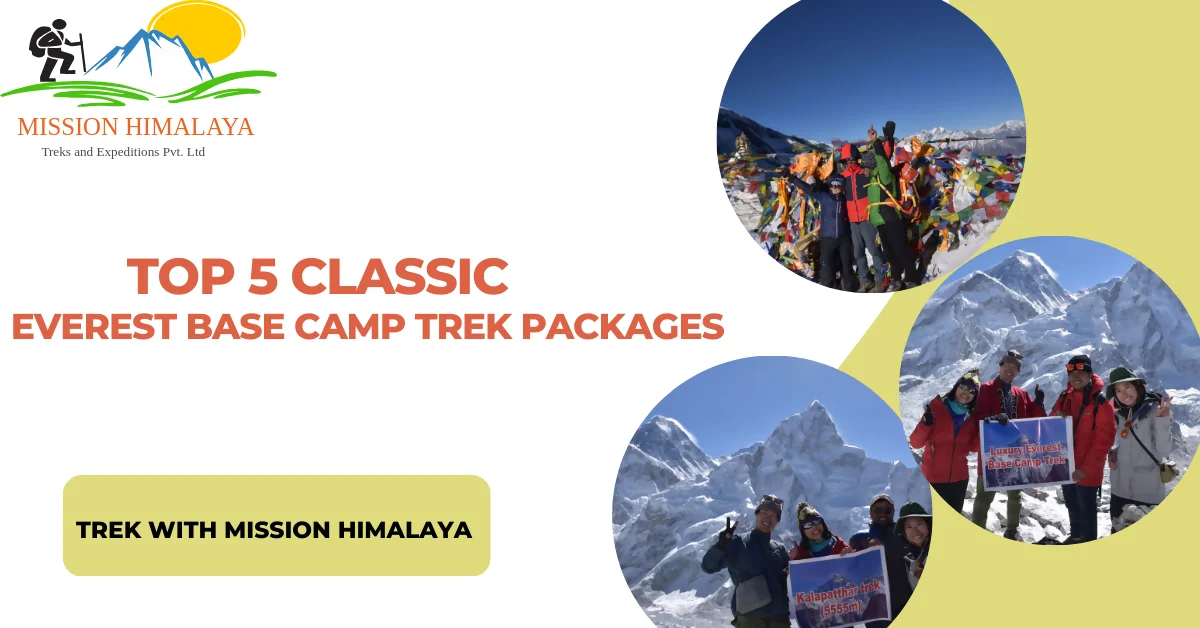Everest Base Camp Trek Shower and Laundry: A Complete Guide
The Everest Base Camp (EBC) trek is one of the most famous and exciting adventures for people who love hiking. This journey through the Himalayas is special because of its beautiful nature, rich culture, and the physical challenge it offers. Starting from the lively town of Lukla, the trail winds through green forests, small Sherpa villages, and tough mountain terrain, all leading to the base camp of Mount Everest, the tallest mountain in the world.
Keeping clean and comfortable is very important during this hard trek. After hiking for many days, trekkers start to worry about where they can take a shower and wash their clothes. Staying clean not only makes you feel good but also helps prevent health problems like skin infections or stomach issues. Good hygiene can make your trekking experience much better and keep you feeling healthy and happy.
In this guide, we will talk about the available Everest base camp trek shower and laundry services. We’ll explain where you can find these services, what kinds of facilities you can expect, how much they cost, and give you tips on how to stay clean and fresh throughout your journey. By the end of this guide, you’ll know how to manage your hygiene needs, so you can enjoy the amazing adventure of trekking to Everest Base Camp.
Everest Base Camp Trek Shower Facilities
Accessibility of Showers
Staying clean on the Everest Base Camp (EBC) trek is very important, but it can be tough. One of the main ways to keep clean is by taking showers, which can be easier or harder to find depending on where you are and how high up you are.
Availability of Showers Throughout the Trek
As you start your trek, you’ll notice that showers are pretty common in the lower areas and big villages. When you begin in Lukla, where the trek starts, you’ll find guesthouses and teahouses with basic shower facilities. In the early parts of the trek, like Phakding and Namche Bazaar, it’s easier to find places to shower and refresh after a day of hiking.
Namche Bazaar, the largest village and a central spot for trekkers, has many places with shower facilities. Here, you can find both simple and more fancy options, including hot showers. Having a hot shower at this stage is great because it lets you clean off the trail dust and feel ready for the next part of your journey.
Variation in Everest base camp trek Shower Quality Based on Altitude
As you climb higher, the availability and quality of showers start to decrease. In places like Tengboche, Dingboche, and Lobuche, showers are still available but often with some limits. The higher you go, the colder it gets, which can make showering less fun.
At these high altitudes, showers are usually basic, often just a small space with a bucket of heated water. The cost of a hot shower also goes up with altitude because it takes more effort to heat the water in these remote areas. Despite being simple and more expensive, a warm shower can feel like a luxury, giving you comfort and a boost in spirits during the hard trek.
The Luxury of Everest Base Camp Trek Shower in Lower Altitude Areas
In the lower areas, especially in Lukla, Phakding, and Namche Bazaar, showers are easier to find and more comfortable. Many teahouses and lodges here have solar-powered or gas-heated shower systems, so there’s usually a good supply of hot water. These showers are often bigger and better maintained, giving you a refreshing and revitalizing experience after a day on the trail.
A hot shower in these lower areas feels amazing. It helps you wash away sweat and dirt, making you feel clean and energized. The comfort of a hot shower also lifts your spirits, getting you ready mentally and physically for the challenges ahead.
Challenges and Considerations for Showering on the Trek
When planning your trek, think about where and how good the shower facilities are along the route. While hot showers become less common as you go higher, knowing where you can find them helps you manage your hygiene, making your trek more enjoyable and comfortable.
Environmental and Practical Concerns
At higher altitudes, providing showers is tough. Water sources become harder to find and are often frozen, making it difficult to collect and heat water. This is why showers cost more and are sometimes not available.
Also, using limited water for showers can impact the environment. Many trekking companies and lodges ask trekkers to use less water to help save these resources. So, taking quick rinses instead of long showers can help reduce your environmental footprint.
Alternative Hygiene Solutions
Since showers are limited and can be expensive at high altitudes, many trekkers use other ways to stay clean. Wet wipes, dry shampoo, and sponge baths are good options. These are lightweight, easy to pack, and can be used in your room, helping you stay fresh even without a hot shower.
By understanding where you can find showers on the Everest Base Camp trek, you can prepare better for the journey. Planning for hygiene breaks in the lower areas and being flexible with your shower expectations as you go higher will help you stay comfortable and clean, making your trekking experience better.
Types of Everest Base Camp Trek Showers
When you go on the Everest Base Camp trek, the showers you find can be very different depending on where you are and how high up you are. Knowing about the different kinds of showers can help you stay clean and comfortable.
Bucket Showers
Bucket showers are the simplest and most common type, especially at higher altitudes. With a bucket shower, you get a bucket of heated water and a small jug or cup to pour the water over yourself.
Pros:
Simple and easy to use.
Available in most teahouses, even high up.
The water can be heated to a nice temperature.
Cons:
Not a lot of water, so it can be hard to wash well.
You have to pour the water yourself.
Facilities can be very basic and not always clean.
Water Temperature: The water is usually lukewarm or moderately warm, but it can change depending on how much fuel is available and how high you are.
Gas-Heated Showers
Gas-heated showers are more advanced than bucket showers and are usually found in lower-altitude teahouses and lodges. These showers use gas heaters to warm the water, giving you a more typical shower experience.
Pros:
Continuous flow of hot water.
More comfortable, like a shower at home.
Available in many guesthouses in lower areas.
Cons:
Hard to find at higher altitudes because of fuel issues.
More expensive than bucket showers.
Sometimes unreliable if there’s no fuel.
Water Temperature: Gas-heated showers usually have hot water, and you can adjust the temperature to your liking.
Solar Showers
Solar showers use solar panels to heat water, making them good for the environment. These showers are common in eco-friendly lodges and teahouses, especially in places with lots of sunlight. Also, you can consider Bringing Solar shower to your trip.
Pros:
Eco-friendly and sustainable, using solar energy.
No need for fuel.
Sometimes free in eco-lodges.
Cons:
Depending on the weather; hot water can be inconsistent.
Less reliable in cloudy or high-altitude areas.
Limited hot water, especially in the evening or during bad weather.
Water Temperature: The temperature depends on the sunlight. On sunny days, the water can be quite warm, but on cloudy days or in the evening, it might be lukewarm or even cold.
Knowing about these different types of showers can help you prepare better for your trek and make sure you stay clean and comfortable.
Combining Everest Base Camp Trek Shower Types with Trekking Strategy
Knowing what kinds of showers are available can help you plan your trek better. In lower areas, you can use gas-heated and solar showers to enjoy hot water and stay clean. As you go higher, be ready to use bucket showers and other hygiene methods like wet wipes or sponge baths.
Each type of shower has its good and bad points, and knowing what to expect can help you stay comfortable and clean during your trek.
Availability of Showers
Shower facilities on the Everest Base Camp trek can be very different depending on where you are and the time of year. Here’s a guide to shower availability at key places along the route, and how busy times can affect these services.
Lukla
Lukla is the starting point of the trek and a busy town with many places to stay. You’ll find lots of guesthouses and teahouses with showers, including gas-heated and sometimes solar-heated ones. Many lodges in Lukla are set up to meet the needs of trekkers, so you can clean up before you start climbing.
Availability: High; most lodges have showers.
Typical Everest Base Camp Trek Shower Types: Gas-heated or solar-heated showers.
Impact of Peak Season: In peak trekking seasons (spring and autumn), Lukla gets very busy. There might be longer waits for showers and fewer available spots if you don’t book in advance.
Namche Bazaar
Namche Bazaar is the biggest village along the trek and a main stop for trekkers. It has a range of places to stay, from basic teahouses to more comfortable guesthouses. Here, you’ll find gas-heated showers and sometimes solar showers. Namche is known for having better amenities than higher places, so you can expect a more comfortable shower here.
Availability: Very high; many lodges have showers.
Typical Shower Types: Mostly gas-heated showers; some solar showers.
Impact of Peak Season: Like Lukla, Namche Bazaar gets crowded in peak seasons. Although it has more capacity, the high number of trekkers can still affect shower availability. Booking ahead is a good idea.
Dingboche
Dingboche is an important stop at a higher altitude where facilities start to get more basic. Showers here are fewer than in lower areas. Most lodges offer bucket showers, and gas-heated or solar showers are rare.
Availability: Moderate; mostly bucket showers.
Typical Shower Types: Mainly bucket showers, with a few gas-heated ones.
Impact of Peak Season: During busy times, Dingboche can get crowded, and you might have to wait longer for a shower or find fewer options. Be prepared for more basic showers.
Gorakshep
Gorakshep is the last stop before reaching Everest Base Camp and the highest place where trekkers usually stay overnight. Shower facilities here are very basic or might not exist at all. The main focus is on providing shelter and food, not amenities.
Availability: Low to non-existent; basic facilities if any.
Typical Shower Types: If there are showers, they will likely be bucket-style with limited hot water.
Impact of Peak Season: In peak seasons, the high demand makes it even harder to find showers. The tough conditions mean it’s unlikely to find a working shower, so plan to use alternative hygiene methods.
By understanding the different types of showers and their availability, you can better plan your trek and stay clean and comfortable on your journey to Everest Base Camp.
Impact of Peak Season on Shower Availability
The best times for trekking to Everest Base Camp are spring (March to May) and autumn (September to November). During these times, more people go trekking, so there is higher demand for places to stay and showers.
Increased Demand: More trekkers mean fewer showers available, especially in busy spots like Namche Bazaar and Dingboche. It’s important to book your accommodations early to get a place with a good shower.
Overcrowding: In peak season, more people means longer wait times for showers and more competition for them. Be ready for delays and think about using alternatives like wet wipes or dry shampoo.
Logistical Challenges: Higher up, it’s harder to get and heat water. With more trekkers, it gets even tougher to have hot water, so it might not always be available.
Knowing where you can find showers and how busy times affect them helps you plan your trek better. By expecting these challenges and planning ahead, you can have a more comfortable and enjoyable trip.
Cost of Showers
The cost of showers on the Everest Base Camp trek varies a lot depending on where you are and what kind of shower it is. Knowing these costs helps you budget for your trek and decide how to stay clean.
How Shower Costs Vary Based on Location and Shower Type
- Lukla: Showers here are usually the cheapest because there are many guesthouses competing for trekkers.
- Bucket Showers: $2 to $5 USD
- Gas-Heated Showers: $5 to $10 USD
- Namche Bazaar: As a major hub, Namche has more expensive showers because of higher living costs and demand.
- Bucket Showers: $4 to $7 USD
- Gas-Heated Showers: $5 to $10 USD (some places may offer solar-heated showers at similar prices)
- Dingboche: At this altitude, showers are less common and more expensive because it’s harder to heat water.
- Bucket Showers: $5 to $8 USD
- Gas-Heated Showers: $7 to $10 USD (many lodges may only have bucket showers)
- Gorakshep: Showers here are the most basic and can be pricey due to the remote location and tough conditions.
- Bucket Showers: $8 to $15 USD (showers may not always be available)
Average Price Ranges for Different Shower Options
- Bucket Showers: $2 to $15 USD, depending on altitude and location.
- Gas-Heated Showers: $5 to $10 USD, mostly found at lower altitudes.
- Solar Showers: Often included in the lodging price but depend on location and weather.
By understanding these costs, you can better plan your spending and keep up your hygiene during the trek.
Showering Tips
Keeping clean in the mountains can be tricky with limited water and cold conditions. Here are some tips to help you stay fresh during your trek:
Plan Your Shower Times:
Early in the Day: Try to shower early when hot water is more available, especially in higher places where heating water can be tough.
Lower Altitudes: Enjoy more frequent and comfortable showers in places like Lukla and Namche Bazaar.
Emphasize Water Conservation:
Quick Rinses: Use less water to save it. In high altitudes, where water is scarce, take shorter showers or quick rinses.
Bucket Shower Technique: With bucket showers, use water wisely. Get wet quickly, soap up, and rinse fast.
Use Eco-Friendly Shower Products:
Biodegradable Soaps: Use biodegradable soap and shampoo to protect the environment. Regular soaps can harm water sources.
Travel-Sized Products: Bring small bottles of your favorite toiletries to save space and reduce waste.
Prepare for Cold Conditions:
Layer Up: When using a bucket shower or cold water, wear layers to stay warm. A quick warm rinse can be better if you don’t stay in the cold for long.
Warm Water Heating: In higher places, you might need to heat your own water with a portable heater or by leaving it in the sun.
Alternative Hygiene Solutions:
Wet Wipes and Dry Shampoo: If showers are unavailable or too cold, use wet wipes and dry shampoo to stay clean. These are easy to use in the mountains.
Respect Local Practices:
Be Considerate: Follow local water use practices and respect community customs. Don’t waste water and follow guidelines at your lodgings.
Knowing the cost and availability of showers, along with these practical tips, will help you stay fresh during your Everest Base Camp trek. By planning ahead, saving water, and using eco-friendly products, you can have a comfortable and environmentally friendly trek.
Everest Base Camp Trek Laundry Services
When you’re hiking to Everest Base Camp, keeping your clothes clean can be tough. Here are some ways you can do laundry on the Everest base camp trek, along with their pros and cons.
Laundry Options
-
Hand Washing
Hand washing is when you clean your clothes in a basin or stream using a little soap.
Pros:
Cheap: It’s mostly free, except for the soap.
Convenient: You can wash your clothes whenever you need to.
Flexible: Good for small items when other options aren’t available.
Cons:
Not Very Effective: It might not get your clothes completely clean, especially in cold water.
Takes Time: Washing and drying clothes can take a long time, especially in cold weather.
Limited Water: Higher up, it can be hard to find enough water.
Where to Hand Wash: Trekkers often wash clothes in teahouse communal areas or nearby streams. Some guesthouses provide basins and soap.
-
Everest base camp trek laundry Service
Many teahouses offer laundry services where the staff will wash your clothes.
Pros:
Easy: You don’t have to wash clothes yourself.
More Effective: Usually cleaner than hand washing.
Saves Time: Lets you focus on your trek.
Cons:
Cost: It can be expensive, especially higher up the trail.
Not Always Available: Not every teahouse offers this, especially in remote areas.
Drying Time: Clothes might take a long time to dry.
Typical Cost: $4 to $8 USD per load (kg).
-
Professional Laundry Services
In larger towns like Namche Bazaar, you might find professional laundry services.
Pros:
High Quality: Provides thorough cleaning.
Efficient: Often quick and can handle more clothes.
Special Care: May offer extra services like stain removal.
Cons:
Expensive: Costs more than other options.
Few Locations: Only found in bigger towns like Namche Bazaar and Lukla.
Variable Quality: Service quality can vary.
Typical Cost: $5 to $10 USD per load.
Choosing the right laundry option depends on what you need, your budget, and where you are. Hand washing is cheap and flexible, teahouse services are convenient but cost more, and professional services offer the best cleaning but are expensive and only in larger towns. Knowing these options can help you keep your clothes clean and enjoy your trek to Everest Base Camp.
Locations and Availability
Laundry facilities are available at different points along the Everest Base Camp trek, but they vary based on location and altitude. Here’s a guide to where you can find laundry services and how available they are:
-
Lukla:
- Location: Lukla is the starting point of the trek and has many guesthouses and teahouses.
- Availability: Many places in Lukla offer laundry services, so it’s a great spot to clean your clothes before starting the trek.
-
Namche Bazaar:
- Location: Namche Bazaar is the largest and most developed town on the trek.
- Availability: Very high. Most lodges and several professional laundry services are available here. It’s a good place to wash your clothes because of its better facilities.
-
Dingboche:
- Location: Dingboche is a popular stop for acclimatization with several guesthouses.
- Availability: Some lodges provide laundry services, but options are fewer than at lower altitudes. It’s good to check in advance if laundry services are available.
-
Gorakshep:
- Location: Gorakshep is a remote area near Everest Base Camp with very few facilities.
- Availability: Laundry services are minimal or not available here. Most trekkers rely on hand washing or getting their clothes cleaned before reaching this point.
Impact of Altitude on Everest Base Camp Trek Laundry Services
- Lower Altitudes (Lukla and Namche Bazaar):
- Availability: High
- Quality: Better
- Reason: Better infrastructure and more frequent water supply.
- Mid-Altitudes (Dingboche):
- Availability: Decreases
- Facilities: More basic
- Advice: Plan your laundry needs before reaching this point.
- High Altitudes (Gorakshep):
- Availability: Very limited
- Advice: Minimize laundry needs before arriving here.
Everest Base Camp Trek Laundry Tips
Practical Advice for Hand Washing Clothes
Use the Right Soap:
- Biodegradable Detergents: Choose a mild, biodegradable soap that is easy on the environment. Regular detergents can pollute water sources and harm local ecosystems.
Effective Hand Washing:
- Prepare a Basin: Use a basin or a clean container to wash your clothes. If a basin is not available, you can use a large zip-lock bag or even a clean stream.
- Soak and Scrub: Soak clothes in water with detergent, then gently scrub any stains. Use a soft brush if needed but avoid scrubbing too hard which can damage fabrics.
Rinsing:
- Thorough Rinse: Rinse clothes thoroughly to remove all soap residues. This helps prevent skin irritation and bad smells.
Drying:
- Hang Clothes: Hang clothes in a well-ventilated area to dry. Use trees or clotheslines provided by guesthouses. In higher altitudes, consider using your trekking poles or the back of your backpack to hang clothes.
Quick-Drying Clothing Materials
- Synthetic Fabrics: Clothes made from synthetic fibers like polyester or nylon dry quickly and keep moisture away from your body.
- Merino Wool: Merino wool dries quickly, wicks moisture, is comfortable, and helps regulate body temperature.
- Avoid Cotton: Cotton takes a long time to dry and can become heavy when wet, which can be uncomfortable during your trek.
Ways to Minimize Everest Base Camp Trek Laundry Needs
- Pack Light: Bring enough clothes to reduce how often you need to wash. Layering is key, so pack clothes that can be easily layered and rotated.
- Use Quick-Dry Clothing: Choose quick-dry fabrics to minimize the need for frequent washing and reduce drying time.
- Rotate Your Clothes: Wear your clothes for several days and rotate them to extend the time between washes.
- Spot Clean: For minor stains or odors, spot clean clothes instead of washing the whole garment.
Cost and Payment of Everest Base Camp Trek Laundry Services
Typical Cost of Everest Base Camp Trek Laundry Services
Lukla:
Cost: $2 to $5 USD per item or load. Prices are lower because many guesthouses and teahouses compete for business.
Namche Bazaar:
Cost: $3 to $6 USD per item or load. Professional laundry services here can be pricier but offer better quality and faster service.
Dingboche:
Cost: $5 to $8 USD per item or load. Prices are higher due to the extra effort needed to heat water at higher altitudes.
Gorakshep:
Cost: If available, laundry services might cost $7 to $10 USD per item or load, but many places don’t offer any laundry services.
Payment Methods
- Cash: Most Everest base camp trek laundry services, especially in smaller teahouses and lodges, take cash. It’s good to carry enough local money on small bills.
- Card Payments: Larger towns like Namche Bazaar might accept credit or debit cards, but this is rare in more remote areas. Always check with the service provider first.
Navigating Everest Base Camp trek laundry services means knowing where facilities are available, picking the right laundry method, and managing costs well. By planning ahead and using quick-drying clothes, you can keep your clothing clean and stay fresh during your adventure.
Here are some easy-to-follow tips to help you with Everest base camp trek shower and laundry while trekking to Everest Base Camp:
Everest Base Camp Trek Shower Tips
- Pack Essentials: Bring along important items like biodegradable soap, a quick-drying towel, and hand sanitizer. These will help keep you clean when showers are scarce.
- Try Alternatives: If you can’t shower, use a sponge bath with a small amount of water or wipe yourself down with wet wipes. You can do this in your tent or sleeping bag to save water.
- Prepare for Cold: Showers at higher altitudes might be cold or not available. Pack extra warm clothes and use warm water from teahouses if you can. Staying warm and dry is key.
Everest Base Camp Trek Laundry Tips
- Time Your Laundry: Do laundry on rest days or when you’re at lower altitudes with more facilities. It’s harder to dry clothes at higher elevations due to the cold.
- Use Local Services: In places like Namche Bazaar or Dingboche, where laundry services are available, take advantage of them. Check with other trekkers for good service recommendations.
- Dry Clothes Quickly: At high altitudes, clothes dry slowly. Hang them in well-ventilated areas and use sunlight if you can. In very cold weather, try drying clothes inside your tent or sleeping bag.
- Carry Laundry Supplies: Pack a small laundry kit with travel-sized detergent, a scrub brush, and clothespins. This will make hand washing easier when no services are available.
General Tips
- Pack Smart: Choose lightweight, quick-drying clothes to reduce how often you need to wash them.
- Be Eco-Friendly: Use eco-friendly detergents and avoid harmful chemicals to protect the environment.
- Stay Flexible: Be ready for different conditions. Everest base camp trek shower and laundry options can vary a lot, so adapting to what’s available will make your trek more enjoyable.
Conclusion
Managing showers and laundry on the Everest Base Camp trek requires some planning and flexibility. Bring the right gear, use available services wisely, and try alternatives when needed. With these tips, you can stay fresh and enjoy your adventure in the Himalayas. Happy trekking!
Birendra Duwadi by profession a trekking and tourist guide and an enterpreur whose passion is trekking in the himalayas. Started Mission Himalaya Treks in 2015 with a new vision to introduce Nepal's Himlayas to the world. His vision is to explore and documentation new trekking routes . Birendra leads Mission Himalaya, a company that change the qualities of trekking in Nepal.


